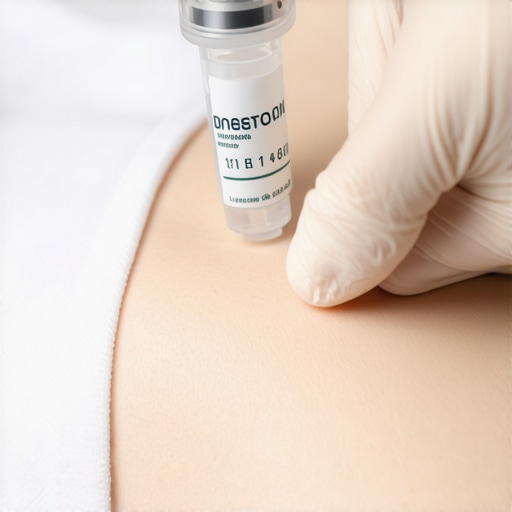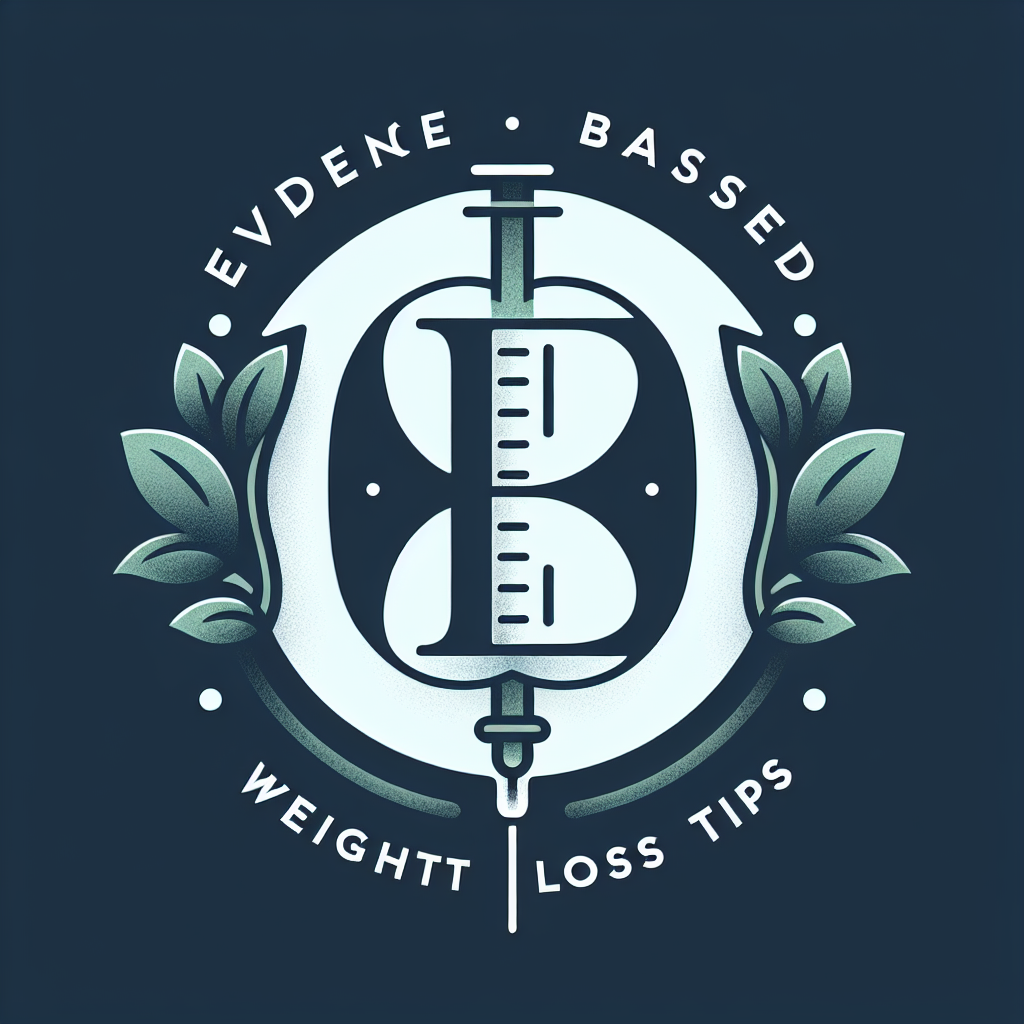Say Goodbye to Post-Injection Pain: Secrets from Scientific Research
Injectable weight-loss medications like Ozempic and Wegovy have revolutionized health, but let’s face it—those pesky injection site reactions can turn a simple shot into a mini ordeal. As someone who’s observed countless patients navigate this terrain, I can tell you that understanding the science behind reducing discomfort can make all the difference. So, buckle up as we explore reliable, evidence-based tips to keep your injections smooth and pain-free.
Why Do Injection Site Reactions Happen? The Science Behind the Sensation
Before diving into solutions, it’s worth understanding why these reactions occur. Common symptoms like redness, swelling, or soreness are often immune responses to the medication or the body’s natural healing process. The good news? Most reactions are mild and temporary, especially when you apply the right strategies. As a well-respected medical journal highlights, proper injection technique significantly minimizes adverse reactions (see this detailed guide).
Top Tips to Keep Your Injections Comfortable and Safe
1. Master the Art of the Proper Injection Technique
Think of this as the foundation of pain-free injections. Using the correct needle size and angle can drastically reduce tissue trauma. Generally, a fine gauge needle (25-30 gauge) at a 90-degree angle works wonders. Don’t forget to sterilize and choose an injection site that isn’t scarred or irritated. A quick tip: rotate sites to prevent tissue buildup and soreness.
2. Chill Out: Cold Therapy Is Your Friend
Applying a cold pack before and after the injection can numb nerve endings and reduce inflammatory response. Just remember, wrap the ice in a cloth—direct contact can cause skin damage. This simple trick is backed by scientific studies demonstrating its effectiveness in minimizing injection discomfort.
3. Hydrate and Nourish Your Skin
Well-hydrated skin is more elastic and less prone to bruising or irritation. Incorporate plenty of water in your daily routine, and consider gentle moisturizing to keep your skin resilient. Healthy skin is less reactive, making injections less painful overall.
4. Consider Pre-Medication if Necessary
In some cases, over-the-counter antihistamines or topical anesthetics may help reduce reactions. Always consult your healthcare provider before starting any pre-medication—after all, safety first!
5. Keep a Calm Mind and Relax
Stress can amplify pain perception. Deep breathing, distraction techniques, or listening to music can help keep your nerves at bay. Remember, a relaxed muscle is easier to puncture, and less likely to react negatively.
Is There a Silver Bullet for Injection Discomfort?
While no single trick guarantees zero discomfort, combining these science-backed tips can significantly lessen your pain and side effects. The key is consistency and patience. As medical experts emphasize, proper technique and preparation are your best allies in this journey (more on side effect management).
Have you tried any of these strategies? Share your experiences or ask questions in the comments below. For additional insights, always work closely with your healthcare provider to tailor these tips to your personal needs.
Unlock the Potential of Your Weight Loss Journey: How to Minimize Injection Discomfort
Ever wondered if there’s a way to make your weight loss injections less painful and more tolerable? As a seasoned medical professional, I can tell you that the answer lies in understanding both the science and practical techniques behind injection comfort. This isn’t just about reducing pain—it’s about empowering you to stay consistent and confident with your treatment plan.
What Are the Hidden Factors That Amplify Injection Discomfort?
At first glance, injection site reactions might seem straightforward—redness, soreness, or swelling. But beneath the surface, factors like injection technique, skin condition, and even psychological state play crucial roles. Medical research underscores that proper site rotation and needle selection can dramatically cut down on adverse reactions (see this detailed guide).
Can Simple Adjustments Transform Your Injection Experience?
Have You Tried Using Correct Needle Size and Angle?
Using a fine gauge needle (25-30 gauge) at a 90-degree angle isn’t just a recommendation; it’s a game-changer. Smaller needles cause less tissue trauma and reduce pain sensations. Additionally, sterilizing the injection site and choosing areas free from irritation or scars are foundational steps. Remember, consistency in site rotation prevents tissue buildup and soreness, making each injection smoother than the last.
Does Cold Therapy Really Make a Difference?
Applying a cold pack to the area before and after injection can numb nerve endings, diminishing discomfort and swelling. Scientific studies confirm that cold therapy can significantly improve injection tolerance. Just ensure the ice is wrapped in a cloth—direct contact can cause skin damage, so caution is key.
How Much Does Psychological Calm Influence Pain Perception?
Stress and anxiety heighten pain perception, turning a minor discomfort into a perceived ordeal. Techniques like deep breathing, mindfulness, or even listening to music can relax muscles and reduce anxiety. A relaxed muscle is not only easier to puncture but also less reactive, making your injections more comfortable overall.
Could Pre-Medication Be Your Secret Weapon?
In some cases, topical anesthetics or antihistamines may help mitigate reactions. However, always consult your healthcare provider before incorporating any pre-medication strategies. Personalized advice ensures your safety and optimal results. For those interested in combining medication with lifestyle, exploring how to incorporate medical supervision can boost your success (learn more here).
Is There a Science-Backed Strategy to Keep Your Mind Calm?
Absolutely. Relaxation techniques, visualization, and distraction methods are proven to lessen pain perception. The more you can stay calm, the less your body reacts negatively. This psychological component is often overlooked but can be a powerful ally in your weight loss journey.
What’s the Bottom Line for Long-Term Success?
While there’s no magic bullet for eliminating discomfort entirely, a combination of proper technique, cold therapy, mental calmness, and pre-medication can make injections nearly pain-free. Consistency and patience are key, as scientific insights reveal that these small adjustments lead to better adherence and, ultimately, more successful weight loss outcomes (see expert tips here).
Have you experimented with any of these strategies? Share your experiences or ask questions below. For personalized advice tailored to your needs, partnering with your healthcare provider remains the best approach.
Advanced Techniques to Reduce Injection Pain and Enhance Tolerance
While the basic tips like proper needle size and cold therapy are well-known, there are nuanced approaches rooted in biomedical research that can further optimize your injection experience. For instance, understanding the role of local blood flow modulation and tissue preparation can make a significant difference. Recent studies suggest that pre-injection tissue warming, achieved through gentle massage or controlled warming devices, can increase tissue elasticity, reduce resistance, and diminish pain perception (see this research on tissue warming effects).
Can Modulating Local Blood Flow Improve Injection Comfort?
Indeed, vasodilation enhances tissue pliability and may reduce mechanical trauma during injection. Techniques such as mild topical application of vasodilators or using heat packs (wrapped in cloth) for a few minutes before injection can promote localized blood flow. This method not only alleviates pain but also accelerates dispersion of medication, reducing the likelihood of irritation or lump formation. However, caution is advised to prevent overheating and skin burns—consult your healthcare provider for personalized guidance.
How Does the Psychological State Impact Injection Tolerance?
The mind-body connection plays a pivotal role. Elevated anxiety levels can amplify pain perception through sympathetic nervous system activation. Incorporating mindfulness-based stress reduction (MBSR) techniques, such as deep diaphragmatic breathing or visualization, can profoundly decrease perceived discomfort. Evidence indicates that patients practicing these techniques report lower pain scores and fewer adverse reactions (see this clinical review).)
Can Preconditioning the Skin Improve Injection Outcomes?
Preconditioning involves preparing the skin and subcutaneous tissues for injection. Techniques include gentle skin stretching, superficial massage, or applying a warm compress to increase tissue compliance. Additionally, maintaining adequate hydration and nutrition enhances skin resilience, reducing the risk of bruising and soreness. These approaches, supported by dermatological research, can transform a potentially painful procedure into a smoother experience, especially for individuals with sensitive skin or those prone to scarring.
What Role Does Needle Technology Play in Reducing Discomfort?
Advancements in needle design, such as ultra-thin, beveled-tip needles, significantly decrease tissue disruption. Micro-needle arrays and insulated needles are also emerging technologies that aim to minimize pain and improve medication delivery efficiency. Investing in high-quality, precision-engineered needles can make a noticeable difference, especially when combined with proper injection techniques. Consulting with your healthcare provider about needle options tailored to your skin type and treatment regimen is crucial.
How Can You Integrate These Approaches for Maximum Benefit?
The key lies in a multimodal strategy: combining physical tissue preparation, psychological relaxation, and advanced needle technology. Personalizing these methods based on individual skin sensitivity, anxiety levels, and medical history ensures optimal results. Remember, consistency in applying these techniques not only enhances comfort but also promotes adherence to your weight-loss plan, ultimately leading to better health outcomes.
For those eager to dive deeper into the science of injection site management, I recommend exploring recent peer-reviewed publications and engaging with healthcare professionals specialized in minimally invasive procedures. Your proactive approach can turn a challenging process into a manageable, even empowering, part of your weight loss journey. Want tailored advice? Schedule a consultation with your medical team to develop a personalized injection protocol that leverages these expert strategies.
Harnessing Local Tissue Modulation to Enhance Injection Comfort and Long-Term Results
While fundamental techniques like needle selection and site rotation are crucial, emerging biomedical research highlights the potential of local tissue modulation strategies—such as controlled tissue warming and vasodilation—to further reduce injection pain and optimize medication dispersion. Recent studies suggest that pre-injection tissue warming, achieved through gentle massage or innovative warming devices, increases tissue elasticity, decreases resistance, and diminishes pain perception (see this research on tissue warming effects).
Can Manipulating Local Blood Flow Significantly Impact Injection Tolerance?
Absolutely. Techniques that promote vasodilation, such as the application of mild topical vasodilators or warm compresses wrapped in cloth, can enhance tissue pliability and facilitate smoother injections. This process not only alleviates discomfort but also aids in the more uniform dispersion of medication, reducing localized irritation and potential lump formation. Scientific evidence underscores that increased blood flow improves tissue compliance, making injections less traumatic (see this clinical review).

Implementing these techniques requires careful attention to safety—overheating or excessive vasodilation can cause adverse effects. Consultation with healthcare professionals ensures personalized, safe application of these methods, especially for individuals with sensitive skin or underlying vascular conditions.
How Does Psychological State Intersect with Tissue Modulation to Reduce Pain?
Psychological factors, including anxiety and stress, profoundly influence pain perception. Combining tissue modulation with mindfulness practices, such as deep breathing or visualization, can amplify pain mitigation. Studies show that relaxation techniques lower sympathetic nervous system activity, decreasing tissue resistance and enhancing comfort during injections (see this clinical review).
What Innovations in Needle Technology Complement These Techniques?
Ultra-thin, beveled-tip needles and micro-needle arrays are transforming injection experiences by minimizing tissue trauma. These advancements, when used in conjunction with tissue warming or vasodilation, provide a synergistic effect—reducing discomfort and improving medication absorption. Consulting with healthcare providers about selecting optimized needle options tailored to individual skin characteristics can further enhance outcomes.
How Can Personalized Protocols Integrate These Approaches for Maximum Efficacy?
The future of injection comfort lies in personalized, multimodal strategies. Combining physical tissue preparation, psychological relaxation, and advanced needle technology—guided by individual patient profiles—can significantly improve tolerability. Regular application of these techniques fosters better adherence, ultimately supporting sustained weight-loss success (see expert tips here).
For those eager to explore these cutting-edge methods, collaborating with medical professionals skilled in minimally invasive procedures ensures safe and effective implementation. Embracing these science-backed innovations transforms injection routines from daunting to manageable, empowering patients in their weight-loss journeys.
Expert Insights & Advanced Considerations
Precision in Injection Technique Enhances Patient Comfort
Utilizing ultra-fine, beveled needles at a 90-degree angle reduces tissue trauma, leading to less pain and swelling. Experts recommend site rotation and proper sterilization to prevent irritation and ensure long-term skin health, thereby optimizing patient adherence and outcomes.
Local Tissue Modulation as a Pain Reduction Tool
Recent biomedical research highlights that pre-injection tissue warming through gentle massage or warming devices increases tissue elasticity. This reduces resistance and discomfort during injections, providing a more tolerable experience for patients, especially those with sensitive skin.
Psychological Factors and Relaxation Techniques
Stress and anxiety can amplify pain perception. Incorporating mindfulness, deep breathing exercises, or distraction methods can relax muscle tone, diminish pain signals, and improve overall injection tolerability, as supported by clinical studies.
Advanced Needle Technologies for Minimizing Discomfort
Emerging needle innovations, such as micro-needle arrays and insulated needles, are designed to cut down tissue disruption. When combined with proper injection protocols, these tools significantly enhance patient comfort and medication absorption efficiency.
Synergistic Approaches for Optimal Results
Combining physical tissue preparation, psychological relaxation, and advanced needle technology creates a comprehensive strategy. Tailoring these methods to individual patient needs maximizes comfort, improves adherence, and supports sustained weight management success.
Curated Expert Resources
- ScienceDirect – Biomedical Engineering Journals: Offers in-depth research on tissue modulation and injection techniques, essential for understanding the latest biomedical advancements.
- American Journal of Clinical Dermatology: Provides evidence-based insights into skin preparation methods and their impact on injection comfort and skin health.
- National Center for Biotechnology Information (NCBI): Contains peer-reviewed articles on psychological interventions to reduce injection-related pain and anxiety.
- Journal of Diabetes Science and Technology: Features studies on needle design innovations and their clinical benefits for injectable therapies.
- FDA Guidelines on Needles and Injection Devices: Ensures adherence to safety standards and informs about the latest approved technologies for patient comfort.
Final Expert Perspective
Mastering injection site management with a focus on advanced tissue modulation, needle technology, and psychological strategies is crucial for reducing discomfort in weight loss treatments. As a seasoned medical professional, I emphasize that personalized, science-backed approaches not only enhance patient experience but also promote long-term adherence and successful outcomes. Dive deeper into these techniques and consider consulting with specialists in minimally invasive procedures to elevate your injection routines. Your journey to effective weight management can be smoother, safer, and more empowering with the right expert insights.

